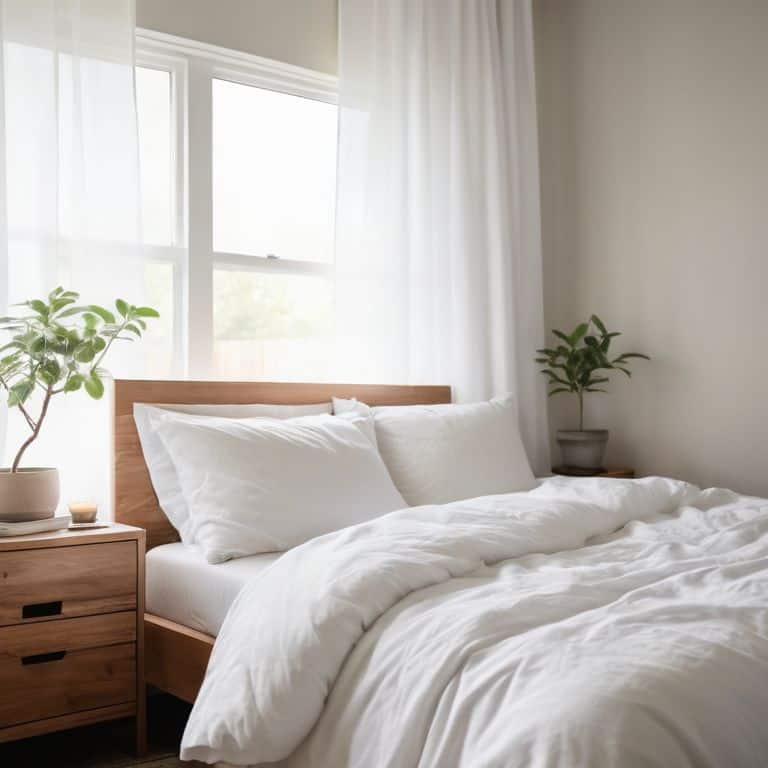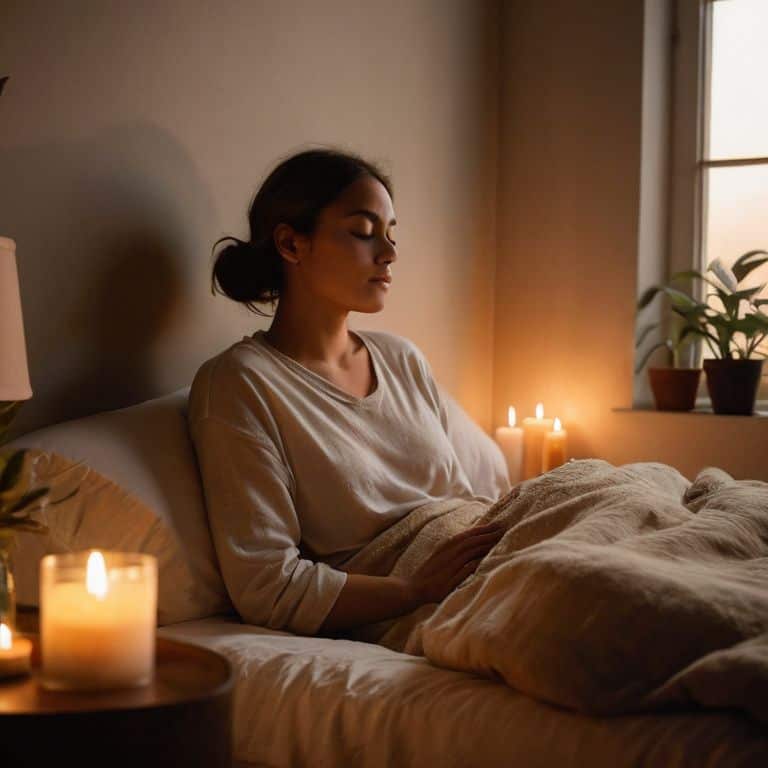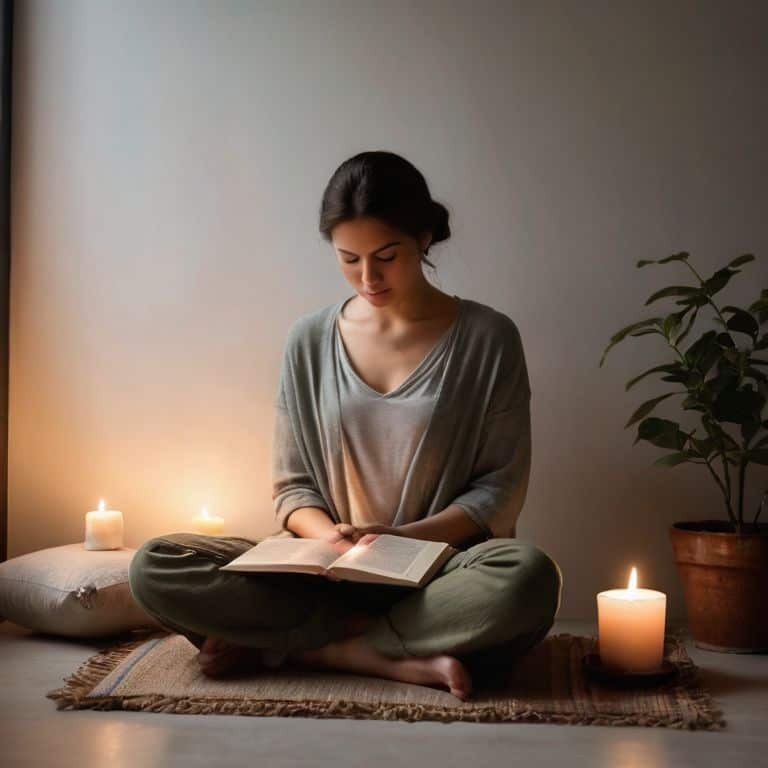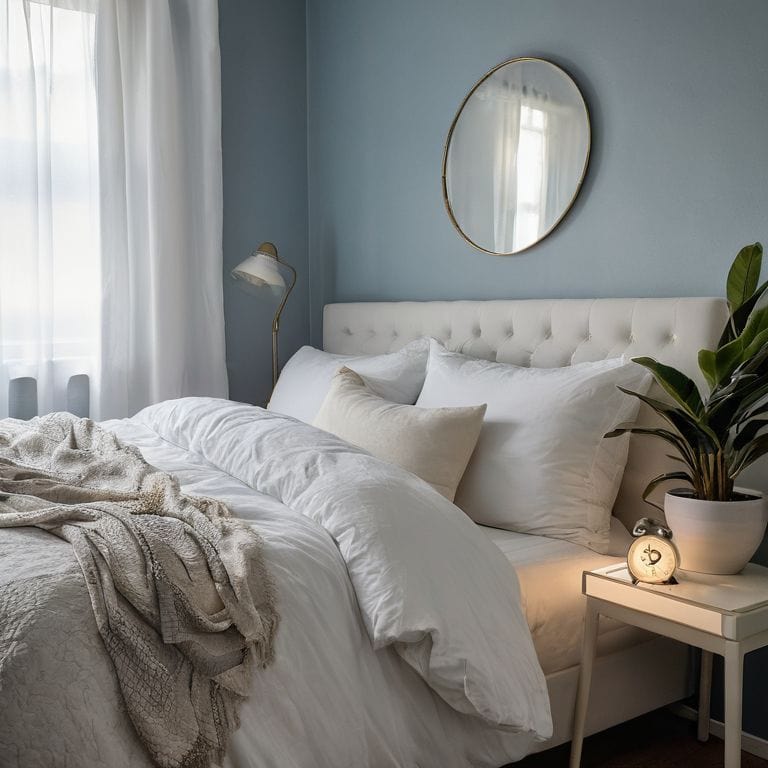As I sit in my Japanese rock garden, surrounded by the soothing sounds of nature, I’m reminded of the countless nights I’ve lain awake, struggling to quiet my mind. It’s a feeling many of us know all too well, and one that’s often accompanied by the frustrating search for ways to how to sleep better. We’ve all been there – tossing and turning, trying every trick in the book to catch those elusive z’s. But what if I told you that the secret to a good night’s sleep isn’t about trying harder, but rather about embracing simplicity?
In this article, I’ll share with you my personal approach to how to sleep better, one that’s grounded in my years of experience as a licensed therapist and mindfulness coach. You won’t find any gimmicks or quick fixes here, just honest, practical advice on how to cultivate a deeper sense of relaxation and tranquility in your daily life. From the importance of establishing a consistent bedtime routine to the power of mindfulness in calming a racing mind, I’ll guide you through the simple yet effective steps you can take to start sleeping better tonight. So, take a deep breath, and let’s get started on this journey to more restful nights and refreshed mornings.
Table of Contents
Guide Overview: What You'll Need

Total Time: 1 hour to 1 day
Estimated Cost: $10 – $100
Difficulty Level: Easy
Tools Required
- Pillow (for proper support)
- White Noise Machine (optional)
- Blinds or Blackout Curtains (for light control)
- Comfortable Mattress (replace if necessary)
Supplies & Materials
- Cozy Bedding
- Essential Oil Diffuser (with calming scents like lavender)
- Sleep Mask (for improved sleep quality)
- Herbal Tea (like chamomile for relaxation)
Step-by-Step Instructions
- 1. First, let’s start by setting the stage for a good night’s sleep – and that begins with creating a sleep-conducive environment. This means making your bedroom a sanctuary that invites relaxation. Consider the lighting, temperature, and noise level in your room. For me, a peaceful atmosphere is akin to a serene landscape painting – it’s all about balance and harmony. Ensure your bedroom is dark, quiet, and at a comfortable temperature. Invest in blackout curtains, earplugs, or a white noise machine if necessary.
- 2. Next, establish a consistent sleep schedule. Going to bed and waking up at the same time every day, including weekends, helps regulate your body’s internal clock. This routine will help you fall asleep faster and sleep more soundly. I often find that a short walk in the morning helps signal to my body that it’s time to be awake and alert, just as the sunrise signals the start of a new day.
- 3. Now, let’s talk about _preparing for bed_. Develop a calming pre-sleep routine to signal your body that it’s time to wind down. This could be reading a book, taking a warm bath, or practicing gentle stretches. Avoid screens for at least an hour before bedtime, as the blue light they emit can interfere with your sleep. For me, a quiet moment in my Japanese rock garden, surrounded by nature, is the perfect way to unwind before bed.
- 4. Limit exposure to screens before bedtime. The blue light emitted from phones, tablets, computers, and TVs can suppress melatonin production, making it harder to fall asleep. If you must use these devices, consider using blue light filtering glasses, apps, or software. Remember, the goal is to create an environment that promotes relaxation, not stimulation.
- 5. Fifth, _watch what you eat and drink_ before bedtime. Avoid consuming heavy meals, caffeine, and alcohol close to bedtime. These can disrupt your sleep patterns and make it difficult to achieve quality sleep. A light, balanced meal a few hours before bed, followed by a calming tea, can be a soothing way to prepare for sleep.
- 6. Next, consider practicing relaxation techniques. Methods like deep breathing, progressive muscle relaxation, or mindfulness meditation can help calm your mind and body before sleep. These techniques are like taking a leisurely walk through a peaceful landscape – they help you stay present and focused on the moment. Regular practice can lead to better sleep quality and duration.
- 7. Seventh, _get regular exercise_, but not before bed. Physical activity is beneficial for overall health and can help improve sleep quality. However, exercising too close to bedtime can actually interfere with sleep, as it can stimulate your body. A morning or afternoon walk, like my favorite long-distance walks, can be a great way to get your body moving without disrupting your sleep.
- 8. Finally, keep a sleep diary to track your sleep patterns, including the time you go to bed, the time you wake up, and the quality of your sleep. This can help you identify patterns and make necessary adjustments to your sleep routine. Reflecting on your sleep diary can be a bit like maintaining a Japanese rock garden – it requires patience, attention to detail, and a willingness to make adjustments for harmony and balance.
Sleep Better Tonight

As we explore ways to improve our rest, it’s essential to consider the role of relaxation techniques in preparing our minds and bodies for sleep. Techniques like deep breathing, progressive muscle relaxation, and mindfulness meditation can help calm the mind and reduce stress, making it easier to drift off to dreamland. By incorporating these practices into our bedtime routine, we can signal to our brain that it’s time to sleep, allowing us to enter into a restful state more quickly.
In addition to relaxation techniques, our environment also plays a significant role in the quality of our sleep. Optimizing bedroom temperature is crucial, as a cooler room can promote deeper sleep and improve the quality of our rest. A temperature range of 60-67 degrees Fahrenheit is often recommended, as it allows our body to reach its ideal temperature for sleep. By creating a sleep-conducive environment, we can improve the duration and quality of our sleep, leading to better rest and recovery.
To further enhance our sleep, it’s worth considering the benefits of morning sunlight exposure. Exposure to natural light in the morning helps regulate our circadian rhythms, which can help improve the quality of our sleep. By getting outside in the morning, even if it’s just for a short walk, we can help our body get into a consistent sleep-wake cycle, leading to more restful and refreshing sleep.
Melatonin Rich Foods for Dreamland
As we explore ways to coax our minds and bodies into a restful slumber, let’s not forget the role of nutrition. Just as a serene landscape can calm the mind, certain foods can gently nudges us toward dreamland. Melatonin-rich foods, in particular, can be a natural ally in our quest for better sleep.
Incorporating foods like tart cherries, walnuts, and bananas into our evening routine can be a simple yet effective strategy. These foods, much like the soothing colors of a watercolor painting, can help calm our inner world, making it easier to drift off to sleep. By making a few conscious choices about what we eat before bed, we can create an environment that supports deep, restorative sleep.
Relaxation Techniques for Insomnia
As we explore ways to sleep better tonight, let’s not forget the power of relaxation techniques in calming our minds and bodies. Just as a gentle stream soothes the landscape, gentle stretches and deep breathing can calm our inner world. I often recommend starting with simple exercises like progressive muscle relaxation or guided imagery to quiet the mind.
By incorporating these techniques into your bedtime routine, you can signal to your body that it’s time to unwind and prepare for rest. Remember, the goal is to create a peaceful atmosphere that invites sleep, much like a serene sunset invites the stars to appear. With regular practice, you’ll find it easier to drift off to dreamland, feeling refreshed and renewed for the morning ahead.
Finding Peaceful Slumber: 5 Gentle Tips to Guide You
- Establish a calming pre-sleep routine, like reading a book or taking a warm bath, to signal to your mind that it’s time to unwind
- Create a sleep-conducive environment by ensuring your bedroom is cool, dark, and quiet, much like a serene forest glade
- Limit exposure to screens and electronic devices before bedtime, as the blue light they emit can be as disruptive as a sudden storm on a peaceful night
- Try incorporating melatonin-rich foods into your dinner, such as cherries or walnuts, to naturally regulate your sleep-wake cycle, just as the seasons gently shift
- Practice gentle stretches or yoga before bed to release any lingering tension, allowing your body to relax and your mind to drift off to dreamland, like a leaf floating gently on a quiet stream
Key Takeaways for a Restful Night's Sleep
Establish a calming pre-sleep routine to signal your body that it’s time to wind down, just as the sunset signals the end of the day
Incorporate relaxation techniques, such as deep breathing or progressive muscle relaxation, to quiet your mind and prepare your body for a restful night’s sleep, much like a gentle stream smoothing out the rocks in its path
Make conscious choices about your diet and lifestyle, including consuming melatonin-rich foods and avoiding stimulating activities before bedtime, to create an environment that nurtures a good night’s sleep, just as a gardener tends to their garden to promote healthy growth
Drifting into Serenity
Just as a river flows smoothly when its waters are calm, our sleep is deepest when our minds are at peace – so let’s tend to our thoughts, and let the tranquility of the night carry us away.
Dr. Samuel Cole
Finding Peace in Slumber

As we’ve explored the world of sleep and its intricacies, it’s essential to remember that small steps lead to significant changes. From incorporating relaxation techniques for insomnia, such as deep breathing and meditation, to adding melatonin-rich foods to our diets, every choice counts. It’s not about making drastic changes overnight but about embracing a journey towards better sleep, one that is tailored to our unique needs and lifestyles. By understanding and applying these simple yet powerful strategies, we can begin to quiet our minds and prepare our bodies for the rest they deserve.
As you embark on this journey to improve your sleep, remember that it’s a path of discovery and patience. Consistency is key, and with time, you’ll find what works best for you. Don’t be too hard on yourself if progress is slow – every small victory is a step closer to finding the restful sleep you’ve been longing for. Keep in mind, a good night’s sleep is not just a luxury, but a fundamental part of living a healthy, balanced life. So, take a deep breath, be gentle with yourself, and let the journey begin.
Frequently Asked Questions
What are some common mistakes people make when trying to establish a bedtime routine?
As I often see in my practice, people commonly mistake a bedtime routine for a rigid schedule, rather than a gentle wind-down. They also try to cram too much into their pre-sleep routine, or stick to it too rigidly, forgetting that flexibility is key. A 10-minute evening walk, or some soothing watercolor painting, can be a great way to unwind and signal to your mind that it’s time to sleep.
How can I create a sleep-conducive environment in a small or noisy space?
Creating a sleep sanctuary in a small or noisy space can be a challenge. I like to think of it as cultivating a peaceful garden in a tiny corner – it requires intention and creativity. Consider using earplugs, a white noise machine, or blackout curtains to transform your space into a restful retreat.
Are there any specific relaxation techniques that are more effective for insomnia than others?
For insomnia, I’ve found that gentle techniques like progressive muscle relaxation and mindful breathing can be particularly effective. These methods help calm the mind and body, making it easier to drift off to sleep. Even a short walk before bed can clear your mind, much like a gentle stream smoothing out the rocks in its path.
